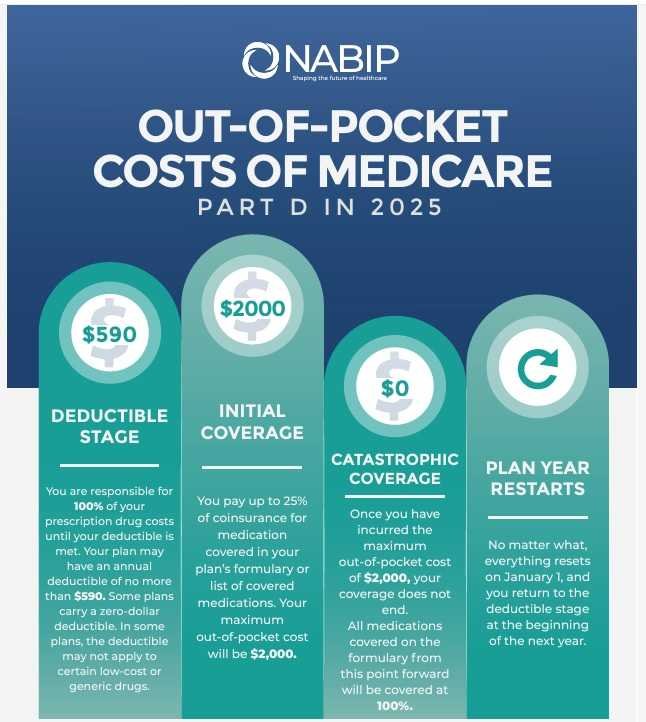Which of the following best defines Medicare Part D is a key question for anyone trying to understand how Medicare helps with prescription drug costs. With healthcare prices climbing, knowing the role of Part D ensures seniors and families can make informed choices about coverage.
Understanding Medicare Part D
Medicare Part D is the program that provides prescription drug coverage for people enrolled in Medicare. It was officially launched in 2006 to fill a long-standing gap in Medicare benefits, which previously did not include most outpatient prescription drugs.
Unlike traditional Medicare Parts A and B, Part D is not run directly by the government. Instead, private insurance companies offer plans approved and regulated by Medicare. This structure allows beneficiaries to choose from multiple plan options based on their medications, budgets, and pharmacy preferences.
Key Points Summary
✨ Quick Guide to Part D Coverage
- Provides outpatient prescription drug coverage.
- Plans are offered by private insurers under Medicare oversight.
- Covers essential categories such as cancer, HIV, and mental health drugs.
- Includes $35 insulin cap and free adult vaccines.
- Starting 2026, yearly out-of-pocket costs capped at $2,100.
- Excludes cosmetic, fertility, and over-the-counter drugs.
What Medicare Part D Covers
Part D plans must cover a wide range of medically necessary drugs. To ensure fairness, Medicare requires every plan to include at least two drugs in each therapeutic category. Some categories have even stronger protections. For example, every Part D plan must cover all or nearly all drugs used for:
- Cancer treatment medications
- HIV/AIDS drugs
- Antidepressants
- Antipsychotics
- Anticonvulsants for seizure disorders
- Immunosuppressants for organ transplant patients
Recent updates also make preventive drugs more affordable. Vaccines such as shingles, flu, and Tdap are now available with no out-of-pocket cost. Insulin continues to have a $35 monthly cap, providing relief for millions of Americans living with diabetes.
What Medicare Part D Does Not Cover
Even though Part D is extensive, certain drugs are excluded. By law, these categories are not covered:
- Over-the-counter drugs like vitamins, cough medicine, or supplements
- Drugs for cosmetic purposes, such as hair growth or skin-lightening
- Fertility medications
- Weight loss or weight gain drugs
- Medications already covered under Medicare Part A (hospital) or Part B (doctor-administered)
These limits help keep overall costs manageable while focusing on treatments considered medically necessary.
Costs and New Protections
Each Part D plan comes with its own premium, deductible, and copay structure. Beneficiaries often face varying costs depending on whether their drugs are generic, brand-name, or specialty tier.
However, beginning in 2026, Medicare will introduce a $2,100 cap on out-of-pocket spending for prescription drugs. This historic change means that once beneficiaries spend that amount in a year, they will not owe more for covered prescriptions. This update, combined with the $35 monthly insulin limit, provides stronger financial protections for seniors who need expensive medications.
Choosing the Right Plan
Because every Part D plan has its own formulary, premiums, and pharmacy network, comparing options is essential. When evaluating plans, beneficiaries should consider:
- Whether their prescriptions are listed on the plan’s formulary
- The cost tiers assigned to their medications
- Premium and deductible amounts
- Whether preferred pharmacies offer lower copays
The open enrollment period from October 15 to December 7 each year is the time to join, switch, or drop a plan. Reviewing coverage annually ensures beneficiaries keep the most affordable option that meets their needs.
FAQs
1. Which of the following best defines Medicare Part D?
Medicare Part D is the prescription drug coverage portion of Medicare, offered through private insurers under federal regulation.
2. Are all prescription drugs included in Medicare Part D?
No, only drugs listed on each plan’s formulary are included, though Medicare requires essential categories like cancer and HIV drugs to be covered.
3. How will Medicare Part D costs change in 2026?
Starting in 2026, a $2,100 annual out-of-pocket cap will apply, giving major relief to beneficiaries with high prescription drug expenses.
Understanding which of the following best defines Medicare Part D helps seniors navigate coverage more confidently. With big cost protections on the horizon, now is the time to review options and prepare for the changes ahead. What do you think about these updates—will they help you or someone you know?
